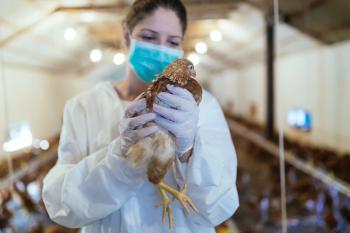
The Frustrating Predicament of PPE Compliance
We know we have a problem with isolation precaution compliance, but just how bad is it?
As hospitals start ordering personal protective equipment (PPE) and ensuring their flu vaccines will be delivered in time, we’re reminded that preparing for infectious diseases events, like flu season, is a never-ending battle. And, despite efforts to ensure the necessary PPE is available on the hospital units, the real battle is often ensuring staff are not only wearing it, but also donning and doffing it correctly.
I’ve heard lectures on Clostridium difficile where the presenters commented on how prevalent isolation failures are when caring for C diff patients, noting that it’s often best to just accept this reality and instead emphasize environmental cleaning and good hand hygiene to combat the spread. The truth is that health care workers, especially nurses, are moving a million miles a minute and running in and out of patient rooms, which makes the burden of PPE understandable. Unfortunately, this doesn’t mean lax isolation precautions should be accepted or encouraged.
To further characterize what leads to these failures, the investigators on a
Eleven observers were taught to perform real-time observations in 2- to 3-hour blocks. They would introduce themselves to the staff on the unit and record information while standing inside or outside the room. Observations included time stamps, which isolation the patient was in, health care interactions inside or directly outside the room, personnel role, hand-hygiene compliance, PPE utilization, interaction with the patient and their environment, what tasks were performed, PPE doffing process, and what activity was performed immediately after leaving the room.
The researchers collected 325 room observations across the 2 sites—280 from the university-based academic medical center, and 45 from the VA hospital. A total of 259 observations occurred outside the room and a majority (72.9%) involved a patient in contact precautions, while 24.9% were on contact enteric precautions (C diff), and 2.1% were of patients in droplet precautions.
Not surprisingly (at least for the infection preventionists reading this), failures were pretty common. A total of 280 failures were observed, including 102 violations (deviations from practice), such as entering an isolation room without PPE or not wearing the PPE correctly, etc. A total of 144 of the failures were process or procedural mistakes, such as errors of intent, most commonly during doffing, and involving a staff member dealing with a challenge which ultimately led to a failure. The observers noted 37 slips, which are automatic behaviors such as touching a contaminated surface (ie, their face) and then touching medical equipment or the patient.
Violations were common during the “drop and dash” exchanges when health care workers entered the room without the intent of staying or touching anything and thought they could run into the room and run off. In their study, the investigators listed several examples of these violations (which are helpful to read if you’re looking for good examples of things we’re all guilty of doing).
All these actions increase the likelihood of contamination; some more than others (slips and violations especially). The findings in this study underscore the systemic failures in PPE use and in proper adherence to isolation precautions, as well as the range of contributing factors. For example, several violations were a result of health care workers rushing into a room without PPE as they thought the patient was having an emergency.
The fact that violations during the “drop and dash” time was common should be an eye-opener for clinicians. Although it’s easy to think we can drop something off quickly in the patient’s room, the truth is that we never know when they will need something or if we will come into contact with a contaminated surface, object, or the patient!
The slips are probably the hardest to change, as these are behaviors we do not even realize we are doing, such as brushing a hair out of our face with gloved hands.
PPE failures are as diverse as they are frequent, which means our strategies to reduce them should be just as varied. I often remind staff that the simple act of putting on PPE can be a good reminder for those around them. Staff can help a stressed resident by handing them PPE while walking into a room with them. They should take the time to show the visitors of patients in isolation how to properly wear the PPE and take it off to avoid cross-contamination. These small actions may provide new staff and even family members with a sense of control during an otherwise chaotic and stressful experience.
Following proper isolation precautions goes a long way toward ensuring the health and safety of patients and everyone who comes in contact with them. It is important that we empower ourselves, our coworkers, and visitors to take their safety and that of their loved ones into their own hands and we can certainly start with something as simple as PPE.
Newsletter
Stay ahead of emerging infectious disease threats with expert insights and breaking research. Subscribe now to get updates delivered straight to your inbox.




























































































































































































































































































